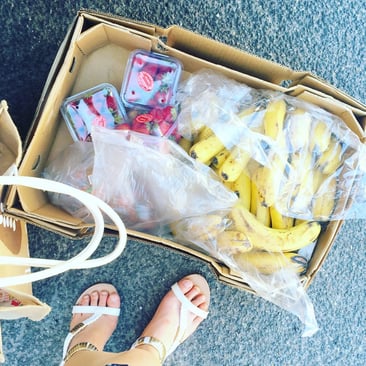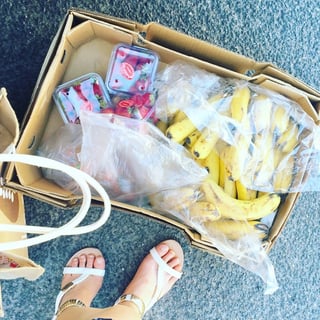Delivering Online: What Food Shopping Can Teach Other Retail (Pt. 1)

 Takeaway: Successful online grocery and takeout delivery services have mastered convenient checkout processes to support their fast-turnaround times and drive results. In part one of this series, we share lessons in good checkout content for other online retailers.
Takeaway: Successful online grocery and takeout delivery services have mastered convenient checkout processes to support their fast-turnaround times and drive results. In part one of this series, we share lessons in good checkout content for other online retailers.
It’s Saturday morning. You’re picking up groceries at your local food store. Winding your way toward the necessary aisles, checking nutrition information, comparing prices, and ensuring the size and quantity match your recipe needs for the week. Grocery shopping: a methodical and critical, albeit monotonous, function of life.
So when food delivery services like Peapod and Instacart were designing their content experiences, they ensured the features content was plentiful and the requisite nutrition, volume, size, and quantity details were easy to locate. Ensuring consumers have confidence at checkout they will receive the exact items they want is critical. After all, what’s more frustrating than arriving home from the grocery only to find out the sour cream container contains 8 ounces, instead of the recipe-required 16? Having only 8, instead of 16, ounces delivered to your door and then having to trek to the store anyway.
Fast Food Delivery
On average, the total process – shop, buy, and pay – of food delivery companies that offer online ordering with same-day or within-the-hour doorstep arrival was 202 seconds, faster than the average online retailer by 9 seconds. More staggering, the top 10 food delivery companies had an average checkout time of 87 seconds. That’s 124 seconds faster than the average online retailer!
Further, the top 10 delivery companies required an average of 7 clicks, versus the average online retailer’s 21. The users of these services know exactly what they want. Either they’re craving curry chicken or barbecue chicken. And all hangry-hell would break loose if they ordered one based on the features content and photo, only to have the other delivered.
At the heart of these delivery services is clear, predictable, easy, and fast convenience, not plodding window shopping. It’s a means to an end, a fast way to check off a to-do list task. Sometimes retailers forget this need for convenience, treating their shopping, buying, and paying experience is a luxurious stroll, not the speedy sprint most consumers want it to be.
Keys to Speed
The more information at hand, the faster the transaction process. Consumers don’t have the time to click around trying to find the information they need. The grocery delivery companies are flush with content specifics like nutrition facts, ingredients, allergy warnings, product disclaimers, ratings, stars, and long, information-driven product titles.
The consumer is equipped with the shopping and buying tools they need in the form of menus, dish ingredients, preparation details, and serving size both onsite and within the mobile app. Read that? These companies don’t skimp on information just because there’s a smaller screen involved, which we know is a pet peeve of consumers.
Why does buying a set of sheets have to be different? Buyers want satin or jersey, 200 thread-count or 1200 thread-count, periwinkle or purple. And they find this information clearly and quickly while directly on your site or performing a Google search, or they do not. Think With Google found that 51 percent of shoppers have bought an item from a different company or brand than originally intendeddue to the quality of product information that they found while searching. Additionally, 58 percent of U.S. grocery shoppers would rather have "better-quality produce" than cheaper products.”
This tells us that to most consumers, price is a throwaway variable when compared to convenience and accurate information, so online retailers must forget that excuse too. If a shopping, buying, and paying process (a topic we cover in part 2) takes care to ensure consumers get exactly what they think they are getting before they checkout, what the food and restaurant delivery companies have shown us is consumers will come back time and time again, simply because they favor the clear shopping process and predictable outcome.
Written by: Cara Wood
Cara Wood is fascinated with emerging technology trends and their impact on commerce and communication. Cara is an avid reader who is frequently over-caffeinated.
Recent Posts
8 Quick Tips for Performance-Driving SEO for Product Pages
10 Brand Examples of Click-Driving Product Images, Videos, and More To Inspire
Summit Spotlight: Salsify Leaders Share How To Advance to the Next Decade of the Digital Shelf
Subscribe to the Below the Fold Newsletter
Standing out on the digital shelf starts with access to the latest industry content. Subscribe to Below the Fold, our monthly content newsletter, and join other commerce leaders.

